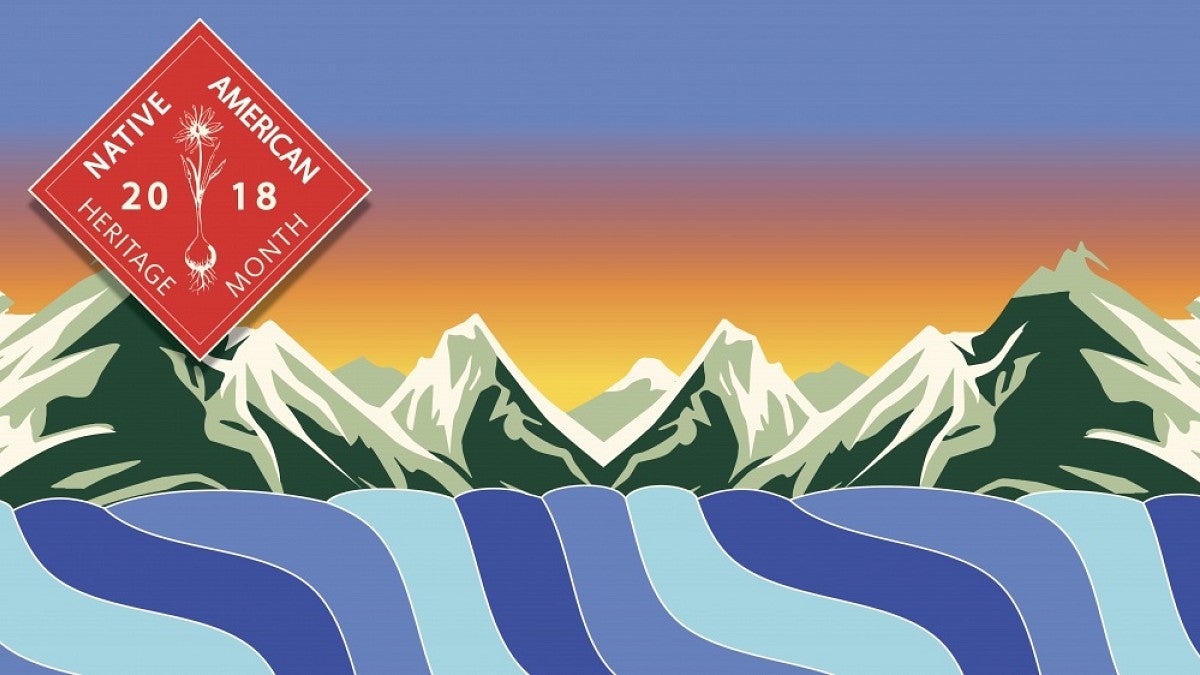The rich and diverse cultures, traditions and history of Native Americans are reflected in the many UO offerings for Native American Heritage Month.
Film, lectures, workshops, theater, colloquiums, panels and gatherings will happen across campus and the community throughout November. The many events will affirm and acknowledge the innumerable contributions Native Americans have made and continue to make to the UO and the United States.
The month is also an opportunity to educate and raise awareness about the historical and ongoing challenges that tribes and communities face and how they have addressed them.
RELATED LINKS
Prof hits the trail to get another view of Native American history
Tribes select UO graduate for the Mark O. Hatfield fellowship
UO anthropologists aid effort on Native American artifacts
UO archaeologists reveal story of 10,000-year-old remains
Mother's Day Powwow celebrates milestone, award and tradition
Work of UO professors helps preserve indigenous storytelling
“NAHM is a celebration of resilience, a survival of seemingly insurmountable odds that included termination, genocidal acts and assimilation policies,” said Jason T. Younker, assistant vice president and advisor to the president on sovereignty and government to government relations. “Each of us has ancestors who sacrificed and survived so that we have the choices we do today. We should all honor the memories of our collective pasts, especially of those who were removed from these lands we now call Oregon.”
Events begin on Nov. 1 with the Native American Student Union’s Indian Taco and Movie Night at the Many Nations Longhouse and Elizabeth Marino’s talk on “A Long History of Climate Change, A Narrow Window for Justice” in Room 101, Knight Library.
Another film event will be a screening and panel discussion about the film “This Is a Stereotype” at the UO Museum of Natural and Cultural History on Nov. 16. The short film by artist Cannupa Hanska Luger, in collaboration with Dylan McLaughlin and Ginger Dunnill, explores preconceived notions about native people that have become rooted in the American public's social conscience.
Luger will also give an artist’s talk at the Knight Law Center on Nov. 15 and present a drop-in seed bomb workshop Nov. 17, when participants can make native seed bombs for ecological restoration projects around Oregon.
Aanmitaagzi and New York’s Spiderwoman Theater present “Material Witness” at Oregon State University on Nov. 6. In “Material Witness,” three generations of indigenous women relate their personal stories and investigate violence and healing in their lives.
The Native American Studies Program will hold two research colloquiums during the month. Brian Klopotek, a member of the Choctaw Nation, will speak on “Teaching U.S. Native American Studies in Mexico With Indigenous and Nonindigenous Students” on Nov. 14, and Kirby Brown, of the Cherokee Nation, will speak on his book “Stoking the Fire: Nationhood in Cherokee Writing, 1907-1970” on Nov. 28. Both will be at the Many Nations Longhouse.
On Nov. 20, the BE Series offers “Changing the Way We See Native America” with Matika Wilbur, a member of the Swinomish and Tulalip tribes. Wilbur is one of the nation’s leading photographers.
Her Project 562 has brought her to more than 300 tribal nations in 40 U.S. states, where she has taken thousands of portraits and collected hundreds of contemporary narratives. The BE Series and the Native American Student Union will also provide a free dinner.
An information night and panel discussion will be offered for Native American undergraduates thinking about graduate school. The event will be held at the longhouse Nov. 12 and includes a community-building dinner.
Rounding out the month will be a salmon bake at the Lane Community College Longhouse on Nov. 29. The event is a collaboration between the UO Native American Student Union and the LCC Native American Student Association.
Native American Heritage Month, also referred to as American Indian and Alaska Native Heritage Month, finds some of its roots in Arthur C. Parker. Parker, a Seneca Indian who was the director of the Museum of Arts and Science in Rochester, New York, persuaded the Boy Scouts to set aside a day for the “First Americans.”
In 1915, the annual congress of the American Indian Association directed its president, Rev. Sherman Coolidge, an Arapahoe tribal member, to ask the U.S. to observe American Indian Day and created a proclamation putting it on the second Saturday of each May. Red Fox James, a Blackfoot Indian, went from state to state to get approval for American Indian Day; he presented the endorsements of 24 state governments to the White House.
The U.S. government didn't act until 1983, when President Ronald Reagan proclaimed May 13 American Indian Day. In 1990, President George H.W. Bush signed a joint congressional resolution designating November as National American Indian Heritage Month, now officially called National Native American Heritage Month.
"We acknowledge that the university is on Kalapuya Ilihi, the traditional homeland of the Kalapuya people who were here first and who will always be here,” said university historian and archivist Jennifer O’Neal, a member of the The Confederated Tribes of Grand Ronde who specializes in the American West and Native American history.
O’Neal said the Kalapuya were dispossessed of their homeland most notably in treaties between 1851 and 1855 and were forcibly relocated to what are now the Grand Ronde and Siletz reservations.
“Today’s descendants are now members of The Confederated Tribes of the Grand Ronde Community and The Confederated Tribes of Siletz Indians and continue to make important contributions in their communities, at the UO and across the land we now refer to as Oregon,” she said. “We humbly honor these ancestors and descendants during Native American Heritage Month."
For further information about events, check out the timeline on the Division of Equity and Inclusion’s website.
—By tova stabin, University Communications


